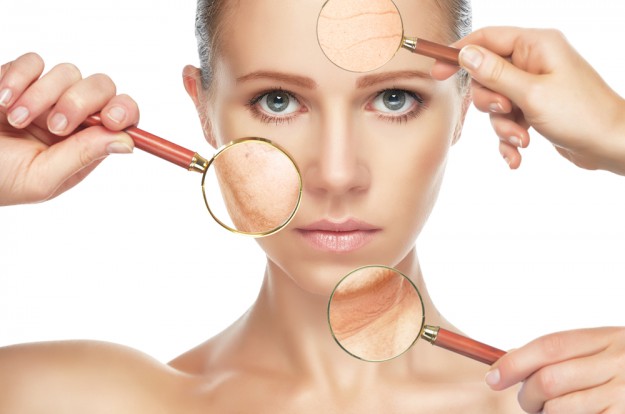Now You Know: 7 Anti-aging myths debunked
There are many Old Wives tales floating around about wrinkles, saggy skin and aging in general. Find out which ones are true and which ones you should bin for good.
"Don’t eat sugar or you’ll get wrinkles. Always wear sunscreen when going out. Don’t smile, it’ll lead to nasolabial lines." We’re a culture obsessed with the fountain of youth and looking young and when it comes to aging, everyone seems to have their two cents to throw in. But which is fact and which is fiction?
Today, in the next few paragraphs, we’re going to get to the bottom of the issue and bust more than a few anti-aging myths you’ve been falsely believing. Read on to find out which ones you’ve heard before.
MYTH: SMILING CAUSES WRINKLES
Fact: Wonder why Kim Kardashian and Victoria Beckham are never seen smiling in photos? It’s because they believe that excessive facial movement will lead to wrinkles. This is somewhat true. An animated face does lead to wrinkles, especially in the upper third of the face. But it’s not so much the movements as it is the diminishing elasticity of your skin that causes the deep grooves and nasolabial folds. As you age, your skin’s rebound abilities reduce, making your laugh lines and frown lines more visible than before.
MYTH: CLOUDY OR COOL DAYS DON'T CALL FOR SUNSCREEN
Fact: You need sunscreen anytime you step out of your house. Rain or shine, sunscreen is a must because UV rays are present all year round, penetrating clouds, fog and even glass material. Aside from causing cancer, the sun’s harmful ultraviolet rays are also responsible for causing wrinkles and photoaging. To prevent this, slather on a sunscreen with at least SPF30 every time you go out.
MYTH: THE RATE AT WHICH WE AGE IS BASED ON OUR GENES
Fact: Our genes do play a role in how fast we develop wrinkles but a certain extent is also influenced by lifestyle choices like diet, sun exposure, smoking, pollution and emotional stress.
MYTH: YOUR DIET DOESN'T CONTRIBUTE TO WRINKLES
Fact: Unfortunately, all that sugar you’re consuming does have an effect on your skin. Sugar and other high glycemic index foods like white bread, pasta and potatoes affect internal organs, which in turn affects the aging process. We also know that Advanced Glycation End Products, formed with the consumption of most of these foods breaks down collagen and causes skin to become more stiff. The changes associated with this process tend to manifest in the mid 30s, which is why eating healthily in your early 20s is vital to maintaining good, supple skin.
MYTH: MOISTURISERS LESSEN WRINKLES
Fact: While regularly applying moisturiser to your skin helps keep it hydrated, it will not prevent wrinkles. A better option to stave off the fine lines would be to drink lots of water, but again the key word here is stave. Aging is inevitable and all these elements can only do so much to keep the wrinkles at bay.
MYTH: EXPENSIVE SKINCARE PRODUCTS ARE MORE EFFECTIVE
Fact: The cream at the high end department store might be more expensive but that doesn’t mean a drugstore buy is any less effective. It’s the ingredients in the product that determine whether or not it’s worth the money or you’re being taken for a ride. Most of the time, you’re shelling out the big bucks for fancy packaging and the big designer name attached to the product. Regardless, everyone has different skin needs, so you should shop according to your skin and not the fancy copywrite that promises the impossible.
MYTH: PLUCK ONE GRAY HAIR AND MANY MORE WILL SPROUT IN ITS PLACE
Fact: Despite what your grandma may have told you, plucking your grey hairs will not lead to a sudden growth of grey hairs. What you do to one follicle has no effect on other ones around it. However, the follicle is still alive and will simply produce another hair strand to replace the one that was plucked out –one, not many. That being said, you shouldn’t keep pulling out your hair as excessive plucking can damage the follicles and even lead to baldness!
Karen George




